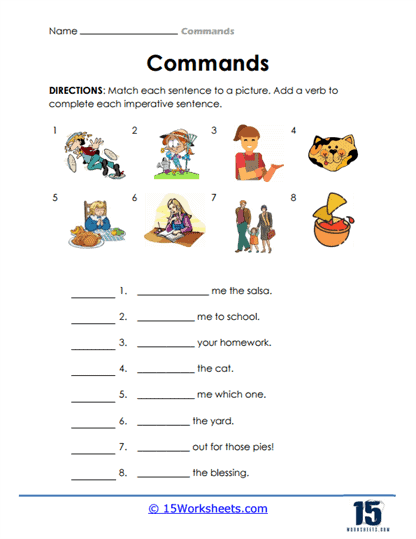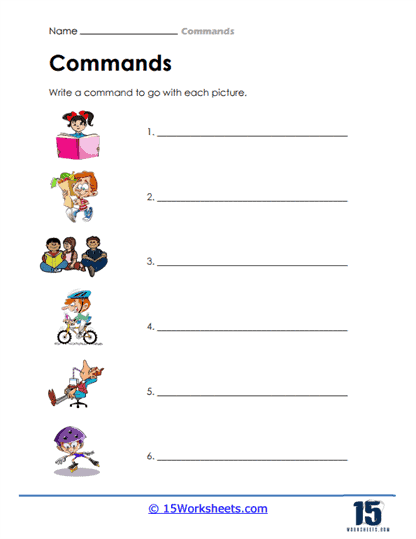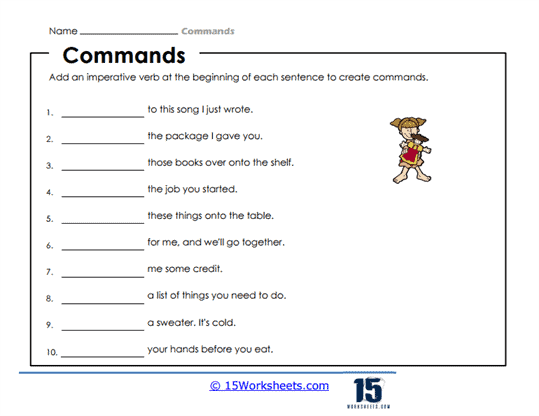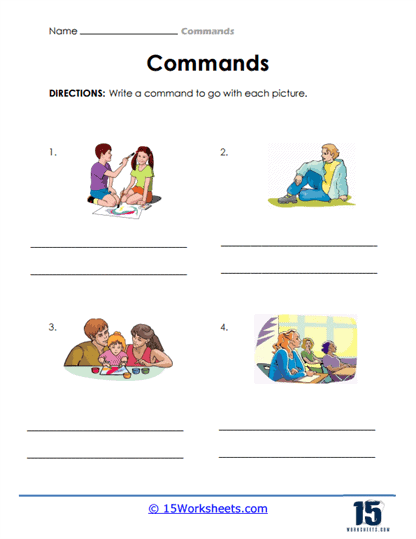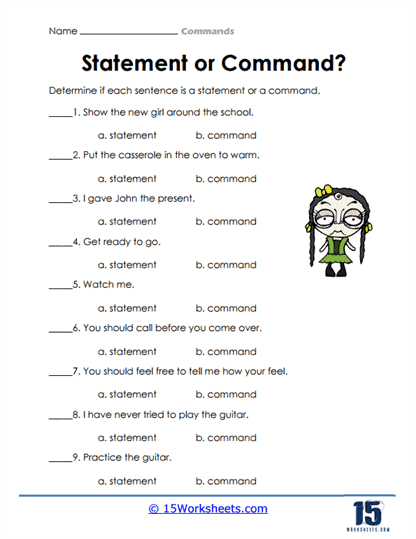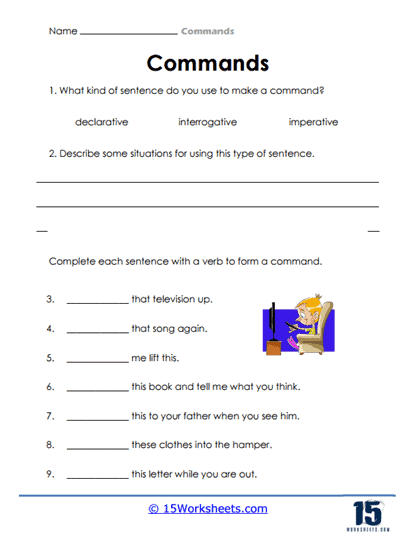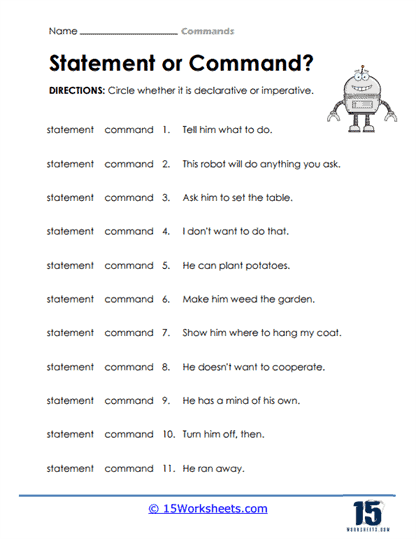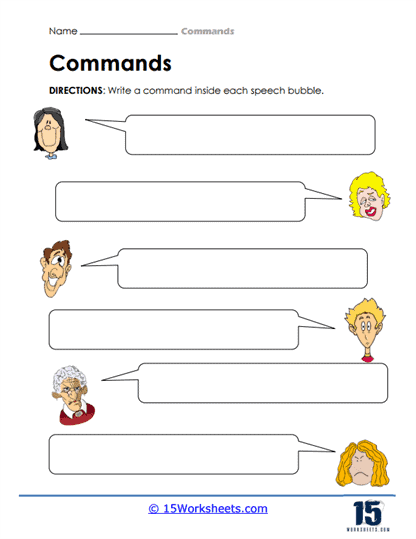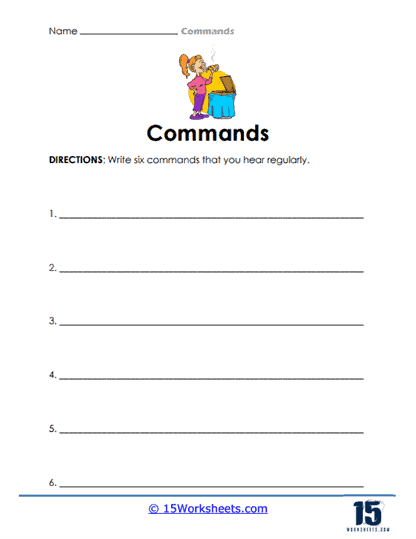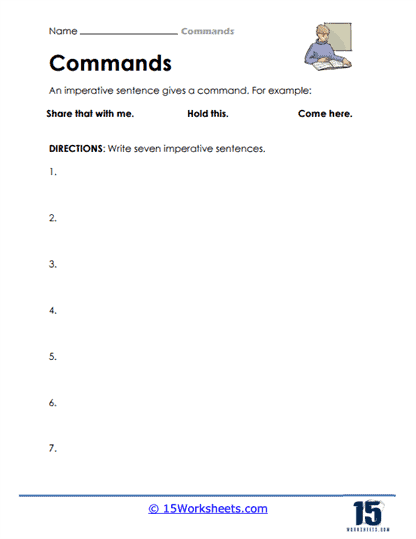Commands Worksheets
About These 15 Worksheets
These worksheets will help students begin to understand and learn about the use of imperative sentences or commands. It’s not a specific term per se, but the name represents the general purpose of the worksheet.
In English grammar, commands, or imperative sentences, are used to give orders, instructions, or directions. For example, “Open your book,” “Close the door,” or “Please be quiet.” These are all commands.
Our command worksheets include activities to help reinforce this concept. Here’s a brief idea of what such a worksheet might contain:
Identification – Students are given a mix of sentences and must identify which ones are commands.
Forming Commands – Students may be given prompts to write their own commands. For example, they might be given a situation like “You need someone to close a window” and must then write the appropriate command (“Close the window”).
Classify and Sort – Students sort a list of sentences into two groups based on how the sentence reads.
Rewriting Sentences as Commands – Students might also be asked to rewrite declarative sentences as commands. For example, turning “You should finish your homework” into “Finish your homework.”
Understanding Tones – This can involve activities to differentiate between polite and impolite commands or understanding the tone of command sentences.
The goal of these worksheets is to help students better understand how commands function in English, to improve their own use of commands in writing and speech, and to enhance their comprehension of commands when they encounter them in reading or listening.
What Are Commands in Language?
Commands, also known as imperatives, are a type of sentence in English and other languages that are used to give orders, directions, advice, or instructions. They are typically characterized by the absence of a subject in the sentence, although the implied subject is usually ‘you’. The verb in a command generally uses the base form.
Here are some examples of commands:
“Close the door.”
“Sit down.”
“Please fill out this form.”
“Don’t touch that.”
“Help me with this.”
“Listen carefully.”
Each of these sentences is an instruction or directive for someone to do something. These are all commands, and they are a fundamental part of how we communicate in any language.
How to Write a Well Developed Command in a Sentence
Writing a well-developed command in a sentence involves being clear, concise, and polite. Here’s how you can write an effective command:
Clarity – Make sure the action to be taken is clear. Avoid ambiguity, and ensure the verb is straightforward. For instance, rather than saying “Do that thing we discussed,” be more specific – “Please complete the report by Tuesday.”
Conciseness – Keep your commands short and to the point. Long-winded commands can confuse the reader and make them forget the actual command. “Submit your assignment” is more effective than “I would really appreciate it if you could possibly see your way clear to submitting your assignment.”
Politeness – Being polite is crucial when giving a command to maintain a positive tone. Use polite words like “please” or phrases like “could you.” For example, “Please close the door” is more polite than just “Close the door.”
Appropriate tense – Commands usually employ the base form of the verb, which is essentially the present tense. For instance, “Read this paragraph” or “Please wash your hands.”
Negative commands – If you’re giving a negative command (telling someone not to do something), use “don’t” before the verb. For example, “Don’t touch the glass.”
Specify details if needed – If the command requires certain conditions or additional steps, be sure to include those. For example, “Please water the plants every morning with half a liter of water.”






